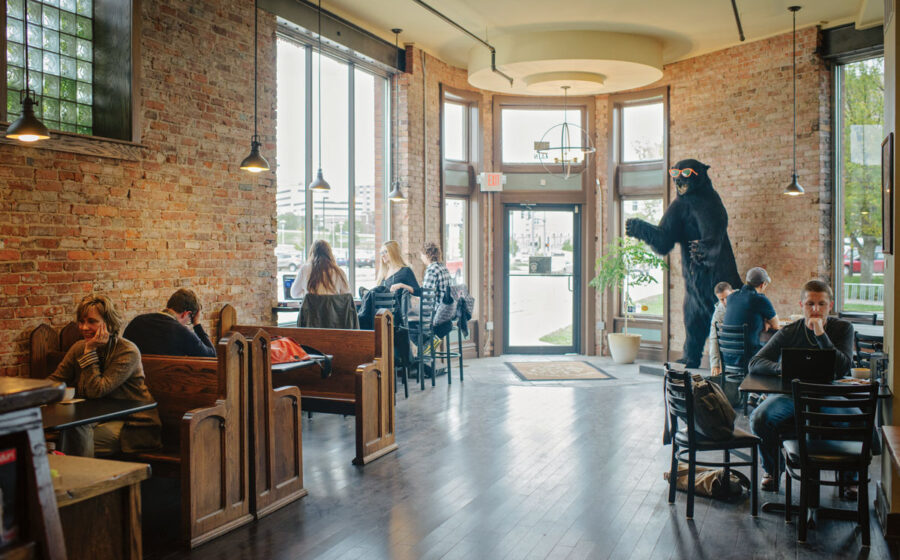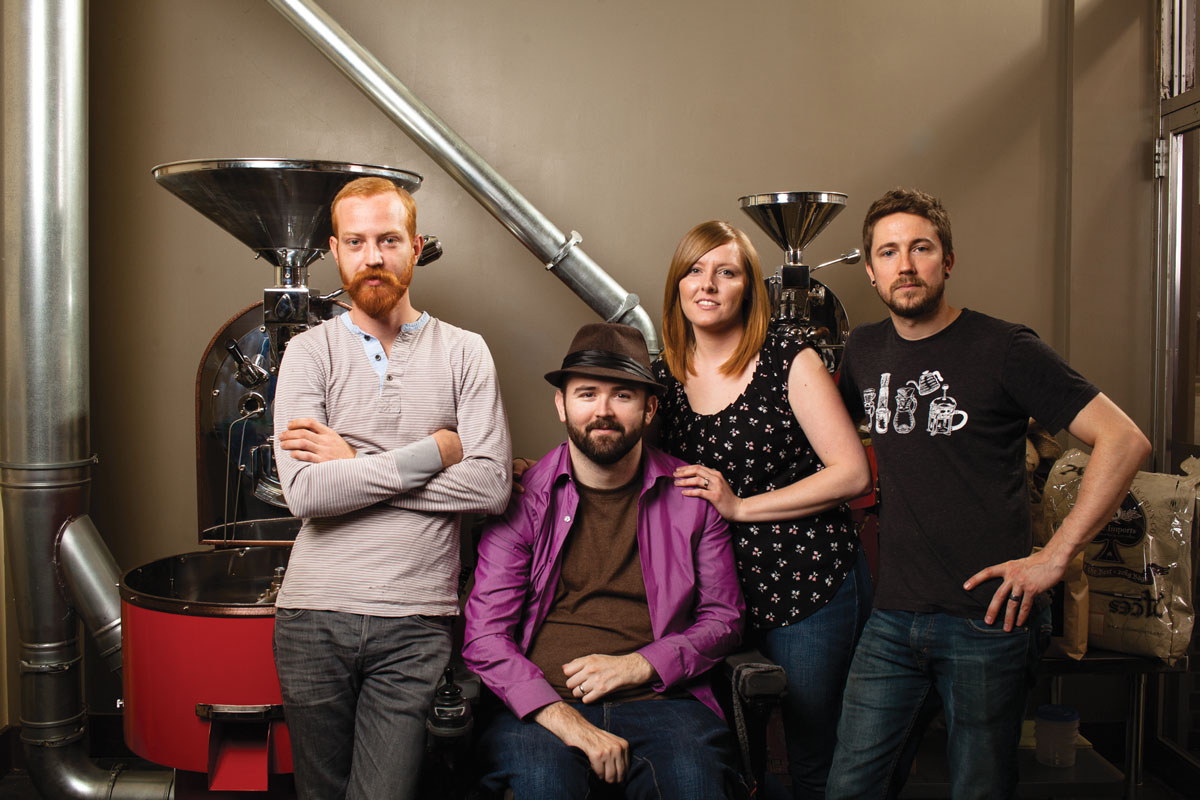[T]he story of thirty-thirty begins in another Peoria café. It was a shop that cared about its customers but didn’t give much thought to the coffee, a state that at once is and isn’t a contradiction. The café got its beans from a local roaster who hit the coffee hard, making deathly dark roasts, which was standard for Peoria. For a reason long forgotten, the café had an Ambex two-kilo roaster that hung out in a room, behind glass, for show. It was like a totem of a cast off plan, and like so many objects that are misused or neglected by their owners, it went looking for a new one.
Ty Paluska was the manager at this café and one of the baristas was Daniel Williamson. Ty had been in coffee since he was eighteen and most of his energy had gone into hospitality, not making great coffee. A second barista at the shop had spent his college months at a big-city café and had learned a bit about roasting. The three began getting green coffee samples from export companies, and the barista showed Daniel the basics of roasting on the Ambex. The first coffee they got was an Ethiopian Sidama, which may be the beans responsible for starting the most coffee careers.
For a time they persuaded their boss to let them roast and put out some great coffees. That wasn’t the café’s model, though, and it soon became apparent they needed to start their own operation. “I can’t do this sub-par coffee stuff anymore, now that my eyes were opened,” Ty says of the time. Like most baristas, they didn’t have the cash or capital to pull this off.
About this time, a pair of regulars, Steve and Haly Elmore, had become friends with Ty and Daniel. Steve had run a construction business until an automobile accident in 2005 paralyzed him. A long physical and psychological healing process was boosted by friendships he and Haly made in the local coffee community. When they began concocting plans with Ty and Daniel, it quickly became clear a team had formed. Ty says Steve brought the business understanding, while he and Daniel knew how to do coffee. “Well,” Ty says, “we thought we knew how to do coffee well.”
Even without funding, the thirty-thirty crew began looking for a space. Peoria is a classic Midwest town, with a mostly ignored downtown and plenty of chain stores in strip malls. They headed downtown and found a triangular building across the street from a hospital and within a short walk of two college campuses and a second hospital. They contacted the owner and hit upon a jackpot of luck. The owners, a family with plenty of properties in the area, had just sold a business and were looking for an investment. A coffeehouse that would renovate one of their old buildings was perfect. The family bankrolled the café, which opened in November 2011.
The downtown shop opens from the street corner onto a large seating area. Just inside the front door is the biggest black bear you’ve ever seen reared up on its hind legs, letting out a mute, taxidermied roar. The bear, which is really a polar bear whose coat was inexplicably painted black, is a Peoria icon that the building’s owners kept in a now defunct hotel. Ty credits the bear (which he named Minus in homage to a favorite band) for giving the café a tie to the community. Past Minus, the outside walls are well-worn bricks that lend the space an industrial feel that’s cut by the rich cocoa-colored floors. Small tables fill the middle of the floor while high-backed old pews are set against the wall for gorgeous booth seating.
In the middle of the room, a long bar stretches against the outside wall. The bar includes a Fetco for morning drip and an all-day pour-over station featuring V60s and Baratza Forte grinders. All of it leads to a La Marzocco Linea GB/5. On the far side of the bar another seating area fans out and includes several communal tables built from repurposed barn wood from where customers can watch Daniel in the roastery through a window.
“Peoria is one of those towns full of chains,” says Ty. “When you’re in our shop, you don’t feel like you’re in Peoria.”
Like many communities saturated with chains, Peoria was used to giant menu boards. Thirty-thirty decided to go simple, small, and limit some drinks, like macchiatos, to in-house only. They aren’t stuffy though. They make four homemade syrups—honey, vanilla, cinnamon, and chocolate—and they create a new signature drink every season. This fall, they went with a candy apple latte. For two summers they offered a rosemary and lavender iced latte, which drove people nuts, says Ty.
Like many progressive coffee businesses far from the major coffee hubs, thirty-thirty has become a lodestone in central Illinois. Their wholesale has increased, and they’re helping other cafés get going. Just a few years ago, Ty was scheming with Daniel, Haly, and Steve about a café. Just a few weeks ago, he was in a tiny town a few hours from Peoria, consulting with a new café that’s going to use thirty-thirty’s coffee.
—Cory Eldridge is Fresh Cup’s editor.


















